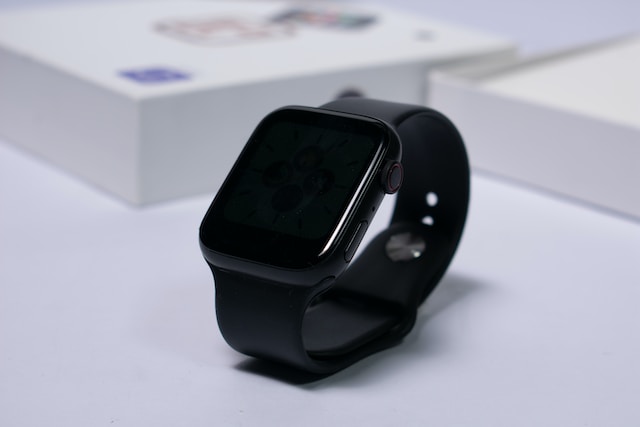The Future of Wearables: How AI and AR are Transforming Smart Glasses

The world of wearables has come a long way since the introduction of the first smartwatch. Today, smart glasses are becoming increasingly popular, and with the integration of Artificial Intelligence (AI) and Augmented Reality (AR), they are transforming the way we interact with information and our surroundings. In this article, we will explore the future of wearables, specifically smart glasses, and how AI and AR are revolutionizing this technology.
Introduction to Smart Glasses
Smart glasses, also known as smart eyewear, are wearable devices that resemble traditional glasses but have a built-in computer and display. They are designed to provide users with a hands-free and eyes-up experience, allowing them to access information, communicate, and interact with their environment in a more convenient and intuitive way. Smart glasses have been around for several years, but it’s only recently that they have started to gain mainstream attention, thanks to the advancements in AI and AR technologies.
The Role of AI in Smart Glasses
AI is playing a significant role in the development of smart glasses. AI-powered algorithms can analyze data from various sensors, such as cameras, microphones, and accelerometers, to provide users with personalized and context-aware information. For example, AI-powered smart glasses can:
- Object recognition: Identify objects and provide users with relevant information, such as product reviews, prices, and instructions.
- Facial recognition: Recognize individuals and provide users with information about their identity, occupation, and relationship.
- Voice assistant: Integrate with virtual assistants, such as Siri, Google Assistant, or Alexa, to provide users with hands-free control and access to information.
AI-powered smart glasses can also learn a user’s preferences and habits over time, allowing them to provide personalized recommendations and suggestions. For instance, if a user frequently visits a particular coffee shop, the smart glasses can suggest their favorite coffee drink or provide them with loyalty rewards.
The Impact of AR on Smart Glasses
AR is another technology that is transforming the world of smart glasses. AR overlays digital information onto the real world, providing users with a more immersive and interactive experience. AR-powered smart glasses can:
- Display virtual objects: Project virtual objects, such as 3D models, videos, or images, onto real-world environments.
- Provide contextual information: Display information about the user’s surroundings, such as directions, reviews, or instructions.
- Enhance gaming experiences: Enable users to play AR games, such as Pokémon Go, in a more immersive and interactive way.
AR-powered smart glasses can also be used in various industries, such as education, healthcare, and retail, to provide users with interactive and engaging experiences. For example, AR-powered smart glasses can be used to:
- Enhance learning experiences: Provide students with interactive and immersive learning experiences, such as virtual labs or field trips.
- Assist healthcare professionals: Provide healthcare professionals with real-time information and guidance, such as patient records or surgical instructions.
- Improve retail experiences: Provide customers with interactive and immersive shopping experiences, such as virtual try-on or product demonstrations.
Current Examples of AI and AR-Powered Smart Glasses
Several companies are already developing AI and AR-powered smart glasses, including:
- Vuzix: Vuzix is a leading manufacturer of smart glasses, and their latest model, the Vuzix Blade, features a see-through display and AI-powered object recognition.
- Epson: Epson’s Moverio smart glasses feature a built-in camera and AR capabilities, allowing users to interact with virtual objects and information.
- Magic Leap: Magic Leap’s One smart glasses feature a high-resolution display and advanced AR capabilities, allowing users to interact with virtual objects and environments in a highly immersive way.
Challenges and Limitations
While AI and AR-powered smart glasses hold great promise, there are several challenges and limitations that need to be addressed. These include:
- Battery life: Smart glasses require powerful batteries to support their advanced features, but battery life is still a major concern.
- Display quality: The display quality of smart glasses is still not on par with traditional displays, and can be affected by factors such as lighting and glare.
- Cost: AI and AR-powered smart glasses are still relatively expensive, making them inaccessible to many consumers.
- Privacy concerns: Smart glasses raise several privacy concerns, such as the potential for unauthorized data collection and surveillance.
Future Developments and Trends
Despite the challenges and limitations, the future of AI and AR-powered smart glasses looks promising. Several trends and developments are expected to shape the industry in the coming years, including:
- Advancements in AI and AR technologies: Improvements in AI and AR technologies will enable smart glasses to provide more accurate and personalized experiences.
- Increased adoption in industries: Smart glasses are expected to be adopted in various industries, such as healthcare, education, and retail, to provide users with interactive and immersive experiences.
- Growing demand for smart glasses: The demand for smart glasses is expected to grow, driven by the increasing popularity of wearables and the need for more convenient and intuitive ways to interact with information.
- New business models and applications: The development of AI and AR-powered smart glasses is expected to create new business models and applications, such as subscription-based services and advertising platforms.
Conclusion
The future of wearables, specifically smart glasses, is being transformed by AI and AR technologies. These technologies are enabling smart glasses to provide users with personalized and context-aware information, as well as immersive and interactive experiences. While there are several challenges and limitations that need to be addressed, the potential benefits of AI and AR-powered smart glasses are significant. As the technology continues to evolve, we can expect to see new and innovative applications of smart glasses in various industries, and a growing demand for these devices from consumers.




